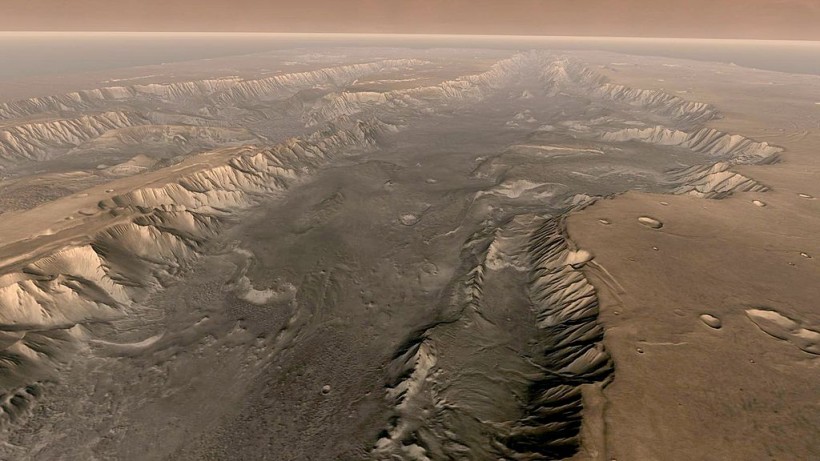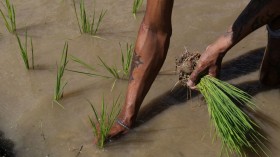NASA is currently following two expeditioners as they travel through Antarctica for 2,268 miles to discover information regarding civilization's potential to thrive on Mars.
British voyagers Justin Packshaw as well as Jamie Facer Childs are now on their 32nd day of an 80-day journey throughout Antarctica.
The Exploration to Mars

VALLES MARINERIS, MARS - Mars' own Grand Canyon, Valles Marineris, is shown on the surface of the planet in this composite image made aboard NASA's Mars Odyssey spacecraft. The image was taken from a video featuring high-resolution images from Arizona State University's Thermal Emission Imaging System multi-band camera on board the spacecraft. The mosaic was then colored to approximate how Mars would look to the human eye. Valles Marineris is 10 times longer, five times deeper and 20 times wider than Earth's Grand Canyon.
The said voyage could provide aerospace companies with a greater grasp of the psychosocial effects of other realms on the mortal mind and spirit.
To first accomplish the 1,342-mile leg from the Harbour of Novolazarevskaya to the geospatial South Pole, and then to Union Glacier Shelter, which is 926 miles past Hercules Inlet, the alpha males are enduring winter weather and topics ranging breezes of up to 200 mph as they find their route over the continent.
According with Chasing the Light expedition portal, "like the severe circumstances observed on celestial bodies, Antarctica provides a hard climate that is beneficial for a spectrum of living organism and scientific studies."
Aside from nets that harness beneficial wind gusts to carry them ahead, the gentlemen are traveling with no support structure, the explorers march and ski their trip south, NASA, the European Space Agency (ESA), and Stanford University are getting information from smart wearable gadgets.
They are also hauling two 440-pound snowmobiles, which hold not only their sustenance and supplies, but also plasma, saliva, pee, and excrement samples collected along the way.
"Justin and Jamie's journey will provide academics with a remarkable empirical account of human adaptation, which will undoubtedly result to human-centered space research."
Also read: Japanese Billionaire Soars into Outer Space with Russian-Built Capsule
NASA Assessing Voyagers Before Expedition
NASA is also assessing the adventurers' capacity to accurately calculate range, which may be incorrect when people are put in an unfamiliar habitat. As during the Apollo 14 expedition in 1971 the unforsaken event took place.
Wherein explorers Alan Shepard and Edgar Mitchell ventured out to explore a remote canyon while trekking over the moon gathering sediment cores, but turned back upon calculating it was over a mile down the road.
In reality, they were barely 50 feet away from the crater's edge.
The soldiers have been entrusted with gathering important ecological measurements such as sea ice extent, radiation levels, and air velocity.
While as per the Chasing the Light project, observatories do not hover precisely over the South Pole, the parameters measured by the two will bridge a remotely sensed deficit and might give significant information into global warming.
The duo's voyage was initially lengthier, with an extra leg carrying them to the Antarctic's Pole of Inaccessibility, the most difficult section of the territory to visit.
Unfortunately, the path had to be modified because gale force winds stopped the adventurers from moving on turbulent times.
"This region needs tolerance as well as adaptability because you can be certain that nothing will go as planned so we could really simply trust that you can react correctly and make the call at the opportune timing," Packshaw said in his day 27 update to the league's live diary.
"Which is what we believe we are accomplishing with this call, moving forward."
Also read: A Massive New Source of Greenhouse Gases is Warming Up the Planet
© 2024 NatureWorldNews.com All rights reserved. Do not reproduce without permission.





